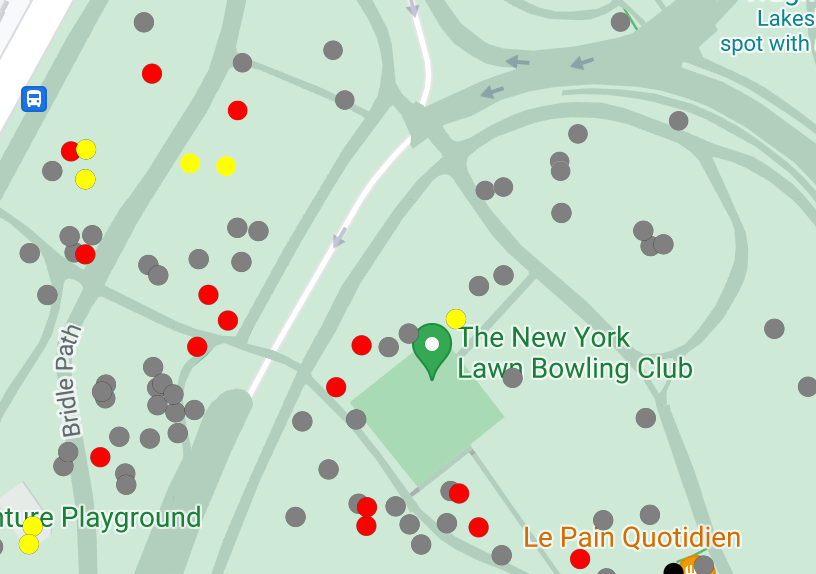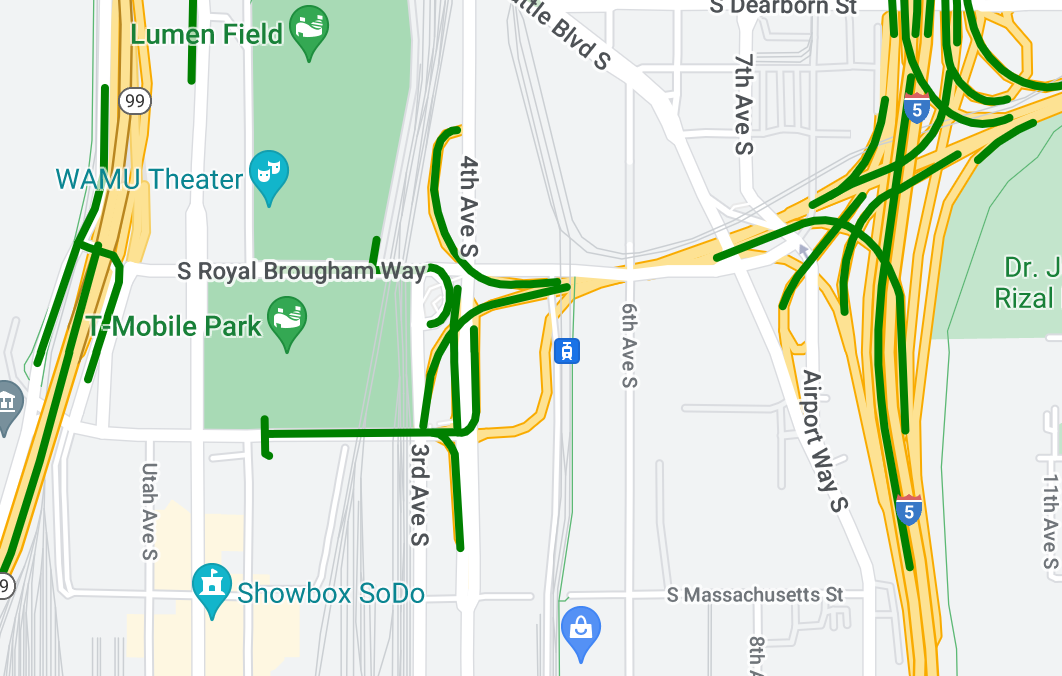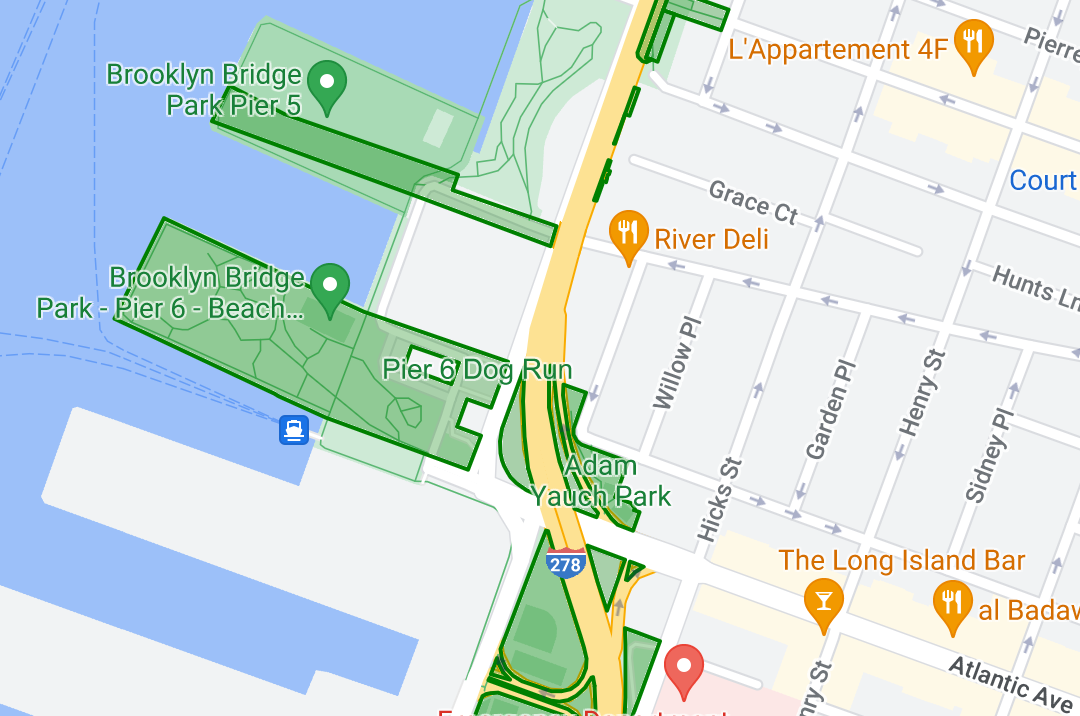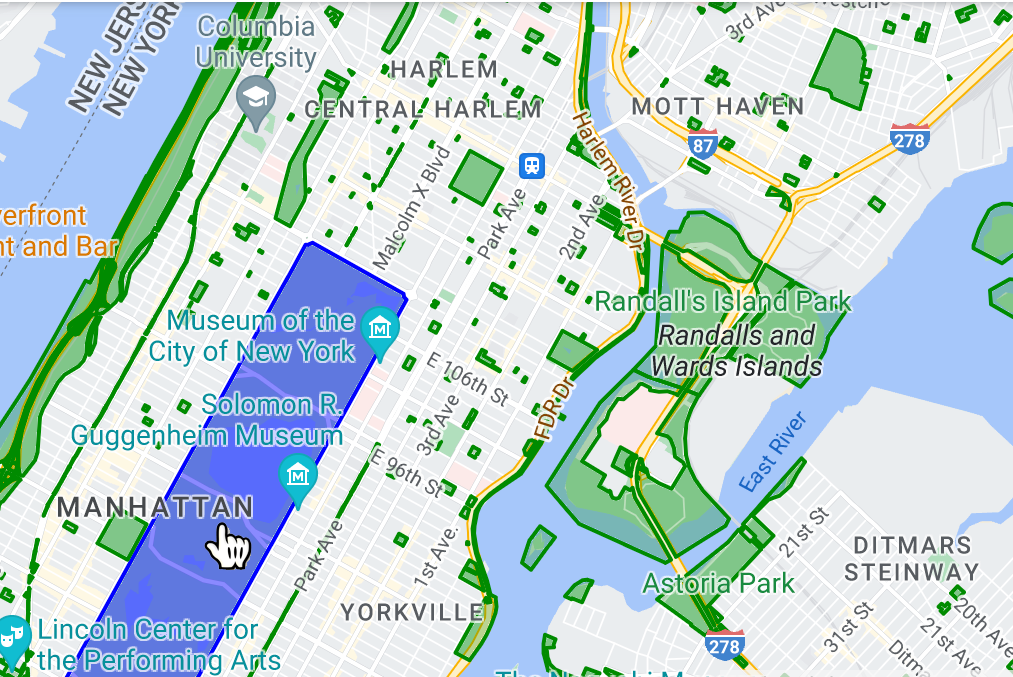עיצוב מבוסס-נתונים של מערכי נתונים מאפשר לכם להעלות מערכי נתונים גיאוספציאליים משלכם, להחיל עיצוב מותאם אישית על מאפייני הנתונים שלהם ולהציג את מאפייני הנתונים האלה במפות. בעזרת סגנון מבוסס-נתונים למערכי נתונים, אתם יכולים ליצור תרשימים להמחשת נתונים על סמך גיאומטריות של נקודות, קווים ופוליגונים, ולגרום לתכונות של הנתונים להגיב לאירועי קליקים. יש תמיכה בסגנון מבוסס-נתונים של מערכי נתונים רק במפות וקטוריות (נדרש מזהה מפה).
איך מתחילים לעבוד עם עיצוב מבוסס-נתונים של מערכי נתונים
הוספת מערכי נתונים גיאו-מרחביים בהתאמה אישית
מוסיפים את הנתונים בהתאמה אישית באמצעות מסוף Google Cloud או Google Cloud Shell. לכל מערך נתונים יש מזהה ייחודי שאפשר לשייך לסגנון מפה. יש תמיכה בפורמטים הבאים של נתונים:
- GeoJSON
- מופרד בפסיקים (CSV)
- KML
פרטים על הדרישות והמגבלות של מערכי נתונים זמינים במאמר יצירה וניהול של מערך נתונים
תכונות של נתוני סגנון
אחרי שמעלים את הנתונים המותאמים אישית ומשייכים אותם לסגנון מפה ולמזהה מפה, אפשר להחיל סגנון על תכונות הנתונים כדי ליצור השפעה ויזואלית, ולגרום לתכונות להגיב לאירועי קליק.
אפשר להגדיר סגנון לנתוני נקודות כדי להציג מיקומים ספציפיים במפה.

החלת סגנון על נתוני קו שבור כדי להדגיש מאפיינים גיאוגרפיים.

עיצוב נתוני פוליגונים כדי להדגיש אזורים גיאוגרפיים.

כדי לגרום לתכונות של נתונים להגיב לאירועי קליקים, מוסיפים מאזין לאירועים.


